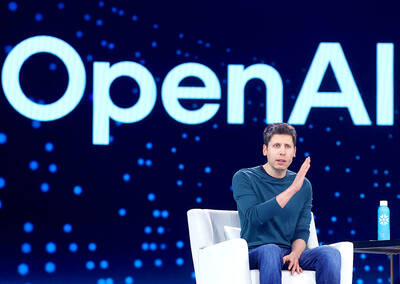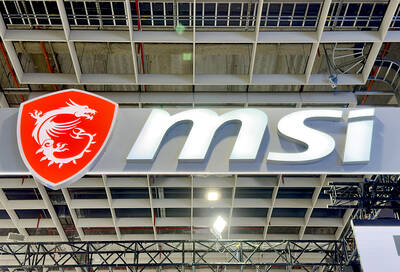Zcash, the latest virtual currency, has been a smash success since its launch seven months ago, drawing in new users with promises of unrivaled privacy protection.
However, the cryptocurrency could face a tough battle integrating into the wider financial system.
After debuting on currency trading platforms in October last year, Zcash took off, hitting an exchange rate of US$1,000 per unit, putting it in a league with the much better established bitcoin, the virtual currency pioneer created in 2009.
While its value has since come down to earth, Zcash is attracting the interest of Russian, Chinese, Venezuelan and, as of Thursday last week, South African consumers.
To make its mark in the world of virtual currencies, Zcash says that it protects user privacy.
However, because of that guarantee it does not offer the transparency demanded by authorities who want to prevent it from being used in money laundering, financing terrorism, evading taxes or fraud.
Zcash was developed by researchers at Johns Hopkins University and the Massachusetts Institute of Technology in the US and Tel Aviv University and the Technion-Israel Institute of Technology in Israel. Only five of the six people who developed the cryptography have been publicly identified.
It is based on a technology dubbed “zk-Snark,” which allows untraceable transactions. The resulting data are encrypted but users are free to identify themselves.
Other cryptocurrencies such as Dash and Monero offer a level of privacy, but Zcash goes further, even obscuring the origin of a payment.
This is the opposite of bitcoin, which uses blockchain technology that publicly records transaction details including the unique alphanumeric strings that identify buyers and sellers.
“You don’t expose all of your communications or all of your transactions to random people on the Internet you barely know,” said Zooko Wilcox, chief executive officer of Zerocoin Electric Coin Co, which manages Zcash.
Virtual currencies are produced, or “mined,” by banks of computers solving complex algorithms, an operation that can be expensive.
Wilcox said he hoped the expanded privacy protection could overcome businesses’ reluctance to adopt Zcash as a trustworthy alternative to traditional state-controlled currencies.
However, Zcash is unlikely to find its place in the wider financial system, said Jonathan Levin, co-founder of Chainalysis, a start-up that helps banks and authorities trace the origins and destinations of virtual currency payments.
“It is hard for existing financial institutions to integrate these types of cryptocurrencies as information on the origin of funds is very hard to ascertain,” he said.
Financial institutions began to take an interest in bitcoin, and in particular in its blockchain technology, once the Darknet marketplace known as Silk Road was closed in 2013.
Silk Road facilitated bitcoin transactions, but was also a platform for the sale of illegal drugs.
“Nobody has ever used Zcash for any kind of crime as far as anyone knows,” Wilcox said, while conceding that “all technologies can be misused.”
Wilcox said he gave a presentation on Zcash to Canadian and US authorities in November last year and their attitude was “very pragmatic.”
Nevertheless, despite Zcash’s efforts to protect users, the currency might be vulnerable to hacking or counterfeiting. In a June last year attack, hackers reportedly stole 3.6 million units of the cryptocurrency worth US$50 million.
Zerocoin Electric is alert to such risks and pays hackers to test the currency’s security, Wilcox said.
Zerocoin Electric expects a maximum of 21 million Zcash units to be mined, or produced, of which 10 percent would go to Zcash Electric shareholders, including founders, employees and investors.

DIVIDED VIEWS: Although the Fed agreed on holding rates steady, some officials see no rate cuts for this year, while 10 policymakers foresee two or more cuts There are a lot of unknowns about the outlook for the economy and interest rates, but US Federal Reserve Chair Jerome Powell signaled at least one thing seems certain: Higher prices are coming. Fed policymakers voted unanimously to hold interest rates steady at a range of 4.25 percent to 4.50 percent for a fourth straight meeting on Wednesday, as they await clarity on whether tariffs would leave a one-time or more lasting mark on inflation. Powell said it is still unclear how much of the bill would fall on the shoulders of consumers, but he expects to learn more about tariffs

Meta Platforms Inc offered US$100 million bonuses to OpenAI employees in an unsuccessful bid to poach the ChatGPT maker’s talent and strengthen its own generative artificial intelligence (AI) teams, OpenAI CEO Sam Altman has said. Facebook’s parent company — a competitor of OpenAI — also offered “giant” annual salaries exceeding US$100 million to OpenAI staffers, Altman said in an interview on the Uncapped with Jack Altman podcast released on Tuesday. “It is crazy,” Sam Altman told his brother Jack in the interview. “I’m really happy that at least so far none of our best people have decided to take them

PLANS: MSI is also planning to upgrade its service center in the Netherlands Micro-Star International Co (MSI, 微星) yesterday said it plans to set up a server assembly line at its Poland service center this year at the earliest. The computer and peripherals manufacturer expects that the new server assembly line would shorten transportation times in shipments to European countries, a company spokesperson told the Taipei Times by telephone. MSI manufactures motherboards, graphics cards, notebook computers, servers, optical storage devices and communication devices. The company operates plants in Taiwan and China, and runs a global network of service centers. The company is also considering upgrading its service center in the Netherlands into a

NOT JUSTIFIED: The bank’s governor said there would only be a rate cut if inflation falls below 1.5% and economic conditions deteriorate, which have not been detected The central bank yesterday kept its key interest rates unchanged for a fifth consecutive quarter, aligning with market expectations, while slightly lowering its inflation outlook amid signs of cooling price pressures. The move came after the US Federal Reserve held rates steady overnight, despite pressure from US President Donald Trump to cut borrowing costs. Central bank board members unanimously voted to maintain the discount rate at 2 percent, the secured loan rate at 2.375 percent and the overnight lending rate at 4.25 percent. “We consider the policy decision appropriate, although it suggests tightening leaning after factoring in slackening inflation and stable GDP growth,”